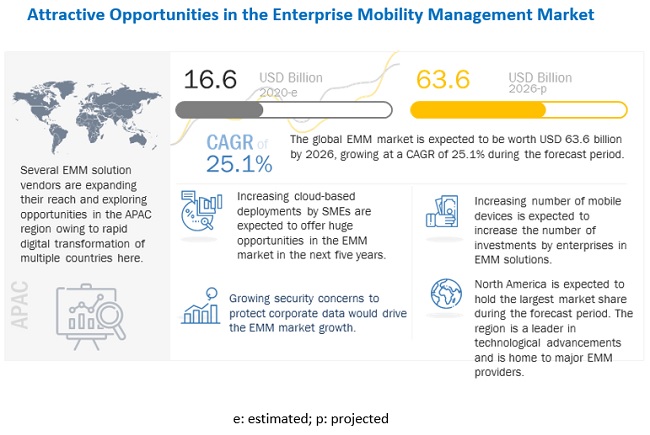Enterprise mobility is key to delivering seamless enterprise applications, services and data. Enterprises work hard to adopt mobile strategies to improve customer and employee experience. In this process, it is important to have a deep understanding of the various challenges of implementing mobile solutions. In the article we will discuss the challenges of enterprise mobility implementation.
What is Enterprise Mobility?

As defined by VMware, “Enterprise mobility is the growing trend of businesses to offer remote working options, allowing the use of personal laptops and mobile devices and making use of cloud technology for data access."
Enterprise mobility can pave the way to transform business operations, interactions, and service delivery processes. Enterprise mobility adoption should be viewed more as a strategy than just technology or application adoption. To succeed in the enterprise mobility approach, one should start meticulously defining business objectives and define the scope of the project.
The Mordor Intelligence research reveals that the Enterprise Mobility market is estimated to be $5.79 billion in 2020 and will grow to $11.96 billion by 2026.

Figure: Enterprise mobility market value as estimated by MarketsandMarkets
Enterprise Mobility Challenges

Adopting enterprise mobility is compelling. The remarkable benefits and areas of opportunity makes the demand continue to grow. However wide-scale adoption can be challenging. Considering the complex functionality, advanced applications and proprietary software and security attributes that need to be included for a successful enterprise mobility strategy. Businesses will also need to consider remote access and cloud accessibility. As more and more enterprises are adopting cloud solutions, the task of integrating and linking functions becomes increasingly complex.
The ever increasing demand for IoT and Big Data adoption in enterprises also effects enterprise mobility as these advancements require a larger scale of technology.
Other key challenges:
- Integrating with varied and complex enterprise systems
- Creating consistent user experience across platforms and devices
- Managing identity and access management
- Keeping up with regulatory and compliance changes
- Protecting against sophisticated cyberattacks
Conclusion
Enterprise mobility initiatives fail when businesses don't consider than many factors and complications that come with a full scale implementation while planning their enterprise mobility roadmap.
















